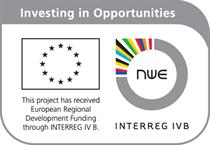Pilot project 4: Characterisation tools and Monitored Natural Attenuation
Location
The pilot site is located in the Region Ile-de-France. It occupies 6700 m2, 40% of which consists of buildings. Currently, the site environment is residential. The local geology of the pilot site comprises old and recent alluvium overlying layers of Lutetian limestone and Ypresian sand. Only the alluvium aquifer has been considered in previous studies; the groundwater level is approximately 2 metres deep. Two main activities seem to impact on soil and groundwater: workshop plating and degreasing solvents.
The products handled at the site, such as PCE and TCE, were detected in groundwater, soil gas and soil. The concentrations of PCE, TCE and their degradation compounds measured previously can reach 1097 mg/m3 for soil gas, 34 mg/kg for soil, and 1059 μg/l for groundwater.
Aim
The investment will involve the implementation of recent research and developments on groundwater, soil, soil-air and risk characterisation tools), as well as Monitored Natural Attenuation as a plume remediation technique.
There will also be experiments with methods for community involvement and risk perception.
Results
- Groundwater, soil, soil gas and indoor air characterisation - Technical book
- Direct-Push Technology, April 8 2013
- Attenuation of the vinyl chloride in the vadose zone
- Video Direct Push Technology - a field investigation (English)
New techniques for the detection and characterisation of pollution caused by chlorinated solvents in soils, groundwater, soil air and indoor air were tested. Some of them were demonstrated and validated on this French pilot site. This video shows the DPT (Direct Push Technology), which can be considered a good screening technique for locating pollution sources and refining the plume delineation. It also allowed us to install groundwater-monitoring and soil-air-monitoring wells in appropriate locations. - Video Direct Push Technology - Essai de terrain (French)
Des techniques innovantes permettant la détection et la caractérisation des pollutions aux solvants chlorés dans les sols, les gaz du sol, l’air intérieur et les eaux souterraines ont été testées. Certaines d’entre elles ont été mises en œuvre et validées sur le site atelier français. Ce film présente la technique DPT (Direct Push Technology) qui peut être considérée comme une bonne technique de screening afin de localiser les sources de pollution et de délimiter les panaches de pollution. De plus, cette technique nous a permis de placer de manière optimale les piézomètres et les piézairs pour la surveillance des eaux souterraines et des gaz du sol.


